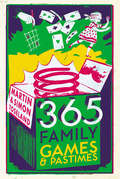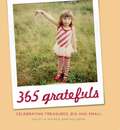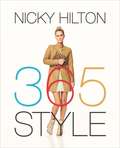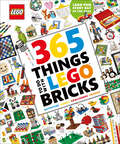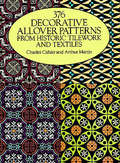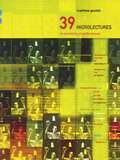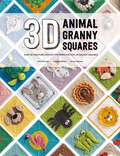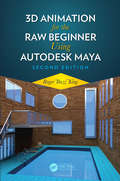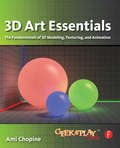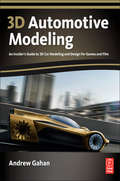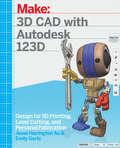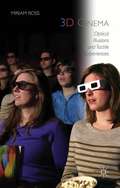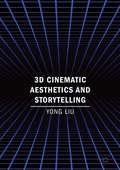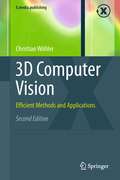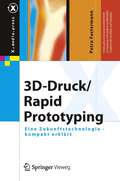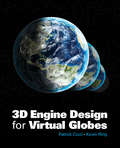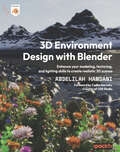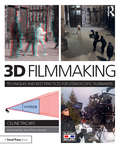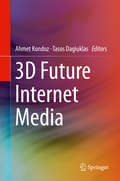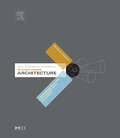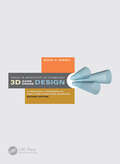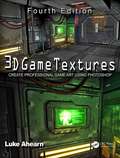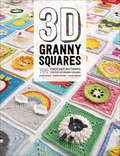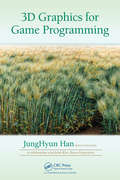- Table View
- List View
365 Family Games and Pastimes
by Martin Toseland Simon ToselandRemember Blind Man's Bluff, Pin the Tail and Murder in the Dark? Making daisy chains and collecting conkers? And when rainy afternoons meant card games and battleships? Jam-packed with games and activities for all ages, 365 Family Games and Pastimes remembers all the classics we used to love, bringing them back for the entire family to enjoy.Full of inspiration and thrifty ideas, this is an indispensible collection for birthday parties, family holidays and everyday fun.
365 Gratefuls: Celebrating Treasures, Big and Small
by Hailey Bartholomew Andrew BartholomewWhat are you grateful for?That is precisely the question that Hailey Bartholomew asked herself every day for a year. Struggling with depression, she reached out for help and received life-changing advice: Find something every day that you are grateful for.Embracing her assignment, Hailey used her talents as a photographer to put a twist on the exercise, taking pictures of her “gratefuls” and becoming more aware that her depression was lifting in the process. 365 Gratefuls is a collection of photographs recounting Hailey’s transformation from depression to an unhindered appreciation of the world around her, combined with stories and images from many others who have encountered the effects of gratitude. This uplifting book will inspire you to look at the world with new eyes, emphasizing gratitude over anxiety in everyday moments.
365 Style
by Nicky HiltonFrom red carpets and runways to front row at Fashion Week, designer and muse Nicky Hilton has earned her reputation as a style icon. Exposed to the top tier of the fashion industry from childhood, in this style guide Hilton reveals tips and tricks of the trade she has learned along the way. Never having employed a stylist, Hilton has created her own personal style. In this guide she helps you discover yours. Despite her opulent upbringing, Nicky maintains a less-is-more mindset and instructs you how to look like a million-without spending a million. Her formula for creating your signature style is as easy as 3-6-5. Consider the 3 main aspects of your lifestyle, choose 6 staple items of clothing, and identify 5 essential accessories. This simple plan will allow you to make savvy wardrobe selections that keep you on-trend and out of hoarder status, for good. Nicky shares her best-kept style secrets: *The $30 wardrobe item you can't live without *The one closet accessory that keeps you organized at all times *Five must-have wardrobe items *DIY upgrades: from bygone to brilliant *How to pack like a jet-setter Full of personal stories, style successes, fashion mishaps and more, 365 Style is the ultimate guide to fashion from the style expert turned best friend you never knew you had!This ebook edition has been optimized for viewing on a large-sized screen
365 Things to Do with LEGO Bricks (Library Edition): Lego Fun Every Day of the Year
by Simon HugoHundreds of creative LEGO® build ideas, activities, games, challenges, and pranks! Winner of the Best Book category Creative Play Awards 2016, this superb LEGO build book inspires you to look at your LEGO bricks in new and exciting ways. Go on a LEGO treasure hunt. Create and perform LEGO magic tricks. Make a LEGO stop-motion movie. Build your own LEGO pet. Challenge your family to build the tallest LEGO tower—and much, much more! Featuring imaginative play and building ideas—from LEGO games that take just a few minutes and require a handful of bricks, to inspirational build ideas and activities to keep you occupied for hours.©2020 The LEGO Group. All rights reserved.
376 Decorative Allover Patterns from Historic Tilework and Textiles (Dover Pictorial Archive)
by Arthur Martin Charles CahierThe increased use of quality designs in 19th-century manufactured goods created a steady demand during that period for collections of decorative patterns. This volume reproduces one such collection - an extremely rare and valuable portfolio of 376 motifs assembled more than a century ago by two French Jesuit scholars. Relying on historical wall and floor tiles, textile patterns, tapestries, wall hangings, and other designs originating in the Middle Ages, the Renaissance, and later European and Islamic cultures, Charles Cahier (1807-1882) and Arthur Martin (1802-1856) produced a work of true artistic distinction. Included are a wealth of splendid floral, animal, bird, and geometric patterns, carefully researched and meticulously redrawn for use in a myriad of graphic and artistic projects. Many of the motifs are accompanied by complementary border designs, an often essential accessory. This edition faithfully reproduces the edition published in 1868, titled Suite aux mélanges d'archéologie. It represents an invaluable copyright-free resource embodying the finest designs from historic sources, ready for use by artists, illustrators, craftspeople, and designers working with textiles, wallpapers, interior decoration, and other projects.
39 Microlectures: In Proximity of Performance
by Matthew Goulish'A series of accidents has brought you this book. You may think of it not as a book, but as a library, an elevator, an amateur performance in a nearby theatre. Open it to the table of contents. Turn to the page that sounds the most interesting to you. Read a sentence or two. Repeat the process. Read this book as a creative act, and feel encouraged.' 39 Microlectures: In Proximity of Performance is a collection of miniature stories, parables, musings and thinkpieces on the nature of reading, writing, art, collaboration, performance, life, death, the universe and everything. It is a unique and moving document for our times, full of curiosity and wonder, thoughtfulness and pain. Matthew Goulish, founder member of performance group Goat Island, meditates on these and other diverse themes, proving, along the way, that the boundaries between poetry and criticism, and between creativity and theory, are a lot less fixed than they may seem. The book is revelatory, solemn yet at times hilarious, and genuinely written to inspire - or perhaps provoke - creativity and thought.
3D Animal Granny Squares: Over 30 Creature Crochet Patterns for Pop-up Granny Squares
by Catie Moore Sharna Moore Celine SemaanCreate cute pop-up animal granny squares with this collection of 3D animal granny square crochet patterns. Choose your favourite from over 30 different designs including a rabbit, a cow, a sheep, a llama, a flamingo, a ladybird and many more. Each motif features a 3D element that is integral to the animal granny square design. Use your squares for unique blankets and throws, for fun toys and accessories - the only limit is your imagination. Animals featured: Sheep, Pig, Bunny, Mouse, Llama, Dog, Rabbit, Cow, Cat, Owl, Chicken, Bear, Flamingo, Penguin, Lion, Fox, Panda, Jellyfish, Whale, Shark, Crab, Terrapin, Fish, Shell, Turtle, Starfish, Spider, Beehive, Butterfly, Dragonfly, Ladybird, Frog, Snail, Unicorn, Turkey and Reindeer Each pattern features full written instructions, as well as a crochet chart for easy stitching. Full guidance on all the crochet techniques needed is included at the back of the book.
3D Animation for the Raw Beginner Using Autodesk Maya 2e
by Roger King3D Animation for the Raw Beginner Using Autodesk Maya is a hands-on academic textbook as well as a do-it-yourself training manual for the individual animator. This second edition has been completely rewritten to take into account updates to Autodesk Maya, including Autodesk’s renderer, Arnold. It contains entirely new examples and tutorial lessons. All 612 images are in full color. The book directs the reader to the parts of Maya that must be mastered in order to create complete 3D projects, and thus it simplifies the process of taking on Maya’s vast and intricate interface, while giving the reader a firm foundation on which to build future knowledge of Maya. It also presents brief examples of other popular 3D applications and rendering engines. This principles-based, yet pragmatic book: Introduces the basic steps of the 3D modeling, materials, animation, lighting, and rendering processes. Presents clear and concise tutorials that link key concepts to practical techniques. Includes access to a webpage for the book: https://buzzking.com/AnimationTextbook/AnimationTextbook.html. On this webpage are videos that cover many of the lessons in the book, as well as video tutorials that present bonus material not included in the book. Frees instructors from the painstaking task of developing step-by-step examples to present Maya’s complex interface and basic capabilities. Boasts an easy-to-follow, tutorial-based learning style ideal for individual study by aspiring animators and do-it yourselfers. Roger "Buzz" King is a Professor Emeritus at the University of Colorado at Boulder, where he teaches 3D Animation for the Computer Science Department and the Alliance for Technology, Learning, and Society (ATLAS), an institute dedicated to the application of technology to the arts. Buzz is an independent 3D animator who serves on the board of directors of a 3D animation startup. Buzz has a B.A. in Mathematics from Occidental College, an M.S. and Ph.D. in Computer Science from the University of Southern California, and an M.Div. from the Iliff School of Theology. Key Features Introduces critical aspects of the 3D animation process Presents clear and concise tutorials that link key concepts to practical techniques Includes access to a dedicated Web site, http://3dbybuzz.com, featuring useful videos, lessons, and updates Frees instructors from developing step-by-step examples to present Maya’s complex interface and basic Boasts an easy-to-follow, hands-on learning style ideal for individual study by aspiring animators and do-ityourselfers
3D Art Essentials: The Fundamentals Of 3d Modeling, Texturing, And Animation
by Ami ChopineCreate high-quality 3D animations and models by using the basic concepts and principles of 3D art presented by GeekAtPlay.com's Ami Chopine. This handy studio reference breaks down the core concepts into easy-to-understand segments and teaches you the 'why' in addition to the 'how.' Using application agnostic step-by-step tutorials, this book teaches you how to model, pose, and texture your creations as well as scenery creation, animation, and rendering. Learn which applications are best for your needs and how you can get started making money in the 3D field. The companion website includes video tutorials, models, project files, and other resources. This book is endorsed by Daz3d.com and includes exclusive Daz3d models.
3d Automotive Modeling: An Insider's Guide to 3d Car Modeling and Design for Games and Film
by Andrew GahanMaster techniques from top automotive designers and world-class game developers with this insider's guide to designing and modeling 3D vehicles. With techniques demonstrated in 3ds Max, Maya, XSI, and Photoshop, "3D Automotive Modeling" starts with a fantastic series of hot concept designs and continues by offering a full hands-on modeling tutorial for each. Some of the very best designers and modelers from across the globe take you through their processes step-by-step, giving you the tips, tricks, and short-cuts that true professionals use. "3D Automotive Modeling" features tutorials from Honda, Toyota, and Mercedes-Benz designers, as well as modelers from Sony Computer Entertainment, Lucas Arts, and Simbin-artists who have worked on some of the biggest games in the industry, including the MotorStorm series. You will get: insider tips from a team of noted professionals, led by author Andrew Gahan, part of the award-winning game team behind the PlayStation 3 smash hit series, MotorStorm; all tutorial files, models, textures, blueprints, and concept images on the associated web site; and, access to a vibrant forum on the web site where you can discuss and share your work and get feedback from the pros.
3D CAD with Autodesk 123D: Designing for 3D Printing, Laser Cutting, and Personal Fabrication
by Jesse Harrington Au Emily GertzIf you've arrived at a stage in your creative life where you're ready to do more with your computer, it's time to learn how to combine its power with new advances in computer-aided design (CAD) and fabrication to make something awesome--in three dimensions! The free suite of Autodesk 123D software offers all the tools you need to capture or design three-dimensional objects and characters. This book tells you how to harness that power to print or fabricate just about anything you can imagine. Want to make something mechanical or structural that's based on precise measurements? 123D Design can help! Ready to create something cool based on a character, an organic shape, or something found in nature? 123D Catch, 123D Meshmixer, and 123D Sculpt+ will assist. Learn how to use these tools, plus 123D Make--perfect for prototyping designs you'll cut with a CNC mill--to take your creativity to a new level.An ideal book for Makers, hobbyists, students, artists, and designers (including beginners!), this book opens up the inexpensive world of personal fabrication to everyone.In 3D CAD with Autodesk 123D, you’ll:Meet the classic "Stanford bunny" and learn to modify it with MeshmixerScan and 3D print anything around youDesign your own 3D-printed guitarFind models in the Sculpt+ community and make a skeleton!Build a birdhouse, prototype a playground, or create a statueLearn everything from basics to troubleshooting skillsGet started making right away
3D Cinema
by Miriam Ross3D Cinema: Optical Illusions and Tactile Experiences questions the common frameworks used for discussing 3D cinema, realism and spectacle, in order to fully understand the embodied and sensory dimensions of 3D cinema's unique visuality.
3D Cinematic Aesthetics and Storytelling
by Yong LiuThis book argues that 3D films are becoming more sophisticated in utilising stereoscopic effects for storytelling purposes. Since Avatar (2009), we have seen a 3D revival marked by its integration with new digital technologies. With this book, the author goes beyond exploring 3D’s spectacular graphics and considers how 3D can be used to enhance visual storytelling. The chapters include visual comparisons between 2D and 3D to highlight their respective narrative features; an examination of the narrative tropes and techniques used by contemporary 3D filmmakers; and a discussion of the narrative implications brought by the coexistence of flatness and depth in 3D visuality. In demonstrating 3D cinematic aesthetics and storytelling, Yong Liu analyses popular films such as Hugo (2011), Life of Pi (2012), Gravity (2013), Star Trek Into Darkness (2013, and The Great Gatsby (2013). The book is an investigation into contemporary forms of stereoscopic storytelling derived from a unique, long-existing mode of cinematic illusions.
3D Computer Vision: Efficient Methods and Applications (X.media.publishing)
by Christian WöhlerThis indispensable text introduces the foundations of three-dimensional computer vision and describes recent contributions to the field. Fully revised and updated, this much-anticipated new edition reviews a range of triangulation-based methods, including linear and bundle adjustment based approaches to scene reconstruction and camera calibration, stereo vision, point cloud segmentation, and pose estimation of rigid, articulated, and flexible objects. Also covered are intensity-based techniques that evaluate the pixel grey values in the image to infer three-dimensional scene structure, and point spread function based approaches that exploit the effect of the optical system. The text shows how methods which integrate these concepts are able to increase reconstruction accuracy and robustness, describing applications in industrial quality inspection and metrology, human-robot interaction, and remote sensing.
3D-Druck/Rapid Prototyping: Eine Zukunftstechnologie - kompakt erklärt (X.media.press)
by Petra FastermannImmer mehr Kreative nutzen die Möglichkeit, eigene dreidimensionale Objekte in Kunststoff, Metall oder Keramik schnell und preisgünstig herstellen zu lassen. Der 3D-Druck ist eine revolutionäre Technologie, die dieVerwirklichung von Ideen ermöglicht. 3D-Drucker werden immer kleiner und leistungsstärker und damit bürotauglicher. Eine umfassende Beschreibung dieser Zukunftstechnologie bietet dieses praxisnahe und anwenderorientierte Buch. Dabei hilft es mit Tipps und Hinweisen bei der Auswahl des optimalen CAD-Programms und 3D-Druckers.
3D Engine Design for Virtual Globes
by Patrick Cozzi Kevin RingSupported with code examples and the authors' real-world experience, this book offers the first guide to engine design and rendering algorithms for virtual globe applications like Google Earth and NASA World Wind. The content is also useful for general graphics and games, especially planet and massive-world engines. With pragmatic advice throughout
3D Environment Design with Blender: Enhance your modeling, texturing, and lighting skills to create realistic 3D scenes
by Abdelilah Hamdani Carlos BarretoSave time and effort when building 3D scenes with this essential guide to creating stunning photorealistic 3D environments in BlenderKey FeaturesReveal modeling tricks to make your Blender 3D environments look realisticDiscover techniques to enhance the photorealism of your scenes while saving timeSet up realistic lighting in your scenes to make your environment look pleasing to the eyeBook DescriptionBlender is a powerful tool for creating all kinds of visual assets, but with such power comes complexity. Creating a photorealistic 3D scene seems like a Herculean task for more than 90% of 3D designers, but don't be discouraged! 3D Environment Design with Blender will get you up and running.This practical guide helps reduce the complexity of 3D environment design, advance your Blender skills, and produce lifelike scenes and animations in a time-efficient manner. You'll start by learning how to fix the most common mistakes 3D designers make with modeling and scale matching that stop them from achieving photorealism. Next, you'll understand the basics of realistic texturing, efficient unwrapping and achieving photorealistic lighting by turning an actual reference of a wood cabin into a realistic 3D scene. These skills will be used and expanded as you build a realistic 3D environment with natural assets and materials that you'll create from scratch. Once you've developed your natural environment, you'll advance to creating realistic render shots by applying cool camera features, and compositing tricks that will make your final render look photorealistic and pleasing to the eye.By the end of this book, you'll be able to implement modeling tricks and best practices to make your 3D environments look stunningly lifelike.What you will learnUnderstand how to avoid the most common modeling mistakes 3D designers makeCreate realistic landscapes using Blender's built-in A.N.T Landscape add-onBuild natural assets such as rocks, flowers, plants, and rivers that you can customize and use in a variety of projectsCreate realistic materials such as snow, mud, wood and animated waterUse the particle system to generate realistic grass, as well as scatter flowers and rocksApply the five lighting rules to achieve great photorealistic resultsUse nodes and materials effectively to produce impressive resultsWho this book is forThis book is for 3D environment artists and open-world game designers who have tried designing 3D environments but have trouble finding the right Blender settings. If you feel overwhelmed understanding how nodes and materials work in Blender, this book will simplify it for you and help you achieve photorealism in your environments in no time. Familiarity with the Blender interface is expected to get the most out of this book.
3D Filmmaking: Techniques and Best Practices for Stereoscopic Filmmakers
by Celine TricartA visual book for the visual artist, 3D Filmmaking: Techniques and Best Practices for Stereoscopic Filmmakers provides a comprehensive overview of the theory, language, and methods behind stereoscopic 3D filmmaking, all in one package. Celebrated 3D filmmaker Celine Tricart explores every facet of the art, from the technical to the practical, including: 3D vision History of 3D cinema Stereoscopic basics and techniques How to shoot in 3D 3D VFXs, animation in 3D, and 2D to 3D conversion Live broadcast in 3D 3D viewing and projection 3D as a storytelling tool Screenwriting for 3D Working with a stereographer 3D storyboarding and previz 3D postproduction Sound design in-depth A must-read for any 3D filmmaker, producer, writer, or technician interested in the third dimension, 3D Filmmaking covers the history of the form, defines key 3D terms and places them into context, and offers lessons on using the medium as a visual storytelling tool, creating a perfect blend of concepts, practice, and history. Full color throughout, the book also includes a pair of 3D glasses for you to view the 3D images within, and each chapter features detailed color diagrams and examples in anaglyph 3D, as well as interviews with 3D visionaries like Jean Pierre Jeunet (Director, Amélie, Alien 4), Chris Sanders (Director, How to Train Your Dragon, The Croods), Demetri Portelli (Stereographer, Hugo), Phil McNally (Stereoscopic Supervisor, How to Train Your Dragon, Madagascar 4), Tim Webber (VFX supervisor, Gravity), Scott Farrar (VFX supervisor, the Transformers franchise), and Victoria Alonso (Stereoscopic Supervisor, Marvel Studios). A companion website (www.routledge.com/cw/tricart) features links to useful resources and footage from 3D films.
3D Flash Memories
by Rino MicheloniThis book walks the reader through the next step in the evolution of NAND flash memory technology, namely the development of 3D flash memories, in which multiple layers of memory cells are grown within the same piece of silicon. It describes their working principles, device architectures, fabrication techniques and practical implementations, and highlights why 3D flash is a brand new technology. After reviewing market trends for both NAND and solid state drives (SSDs), the book digs into the details of the flash memory cell itself, covering both floating gate and emerging charge trap technologies. There is a plethora of different materials and vertical integration schemes out there. New memory cells, new materials, new architectures (3D Stacked, BiCS and P-BiCS, 3D FG, 3D VG, 3D advanced architectures); basically, each NAND manufacturer has its own solution. Chapter 3 to chapter 7 offer a broad overview of how 3D can materialize. The 3D wave is impacting emerging memories as well and chapter 8 covers 3D RRAM (resistive RAM) crosspoint arrays. Visualizing 3D structures can be a challenge for the human brain: this is way all these chapters contain a lot of bird's-eye views and cross sections along the 3 axes. The second part of the book is devoted to other important aspects, such as advanced packaging technology (i. e. TSV in chapter 9) and error correction codes, which have been leveraged to improve flash reliability for decades. Chapter 10 describes the evolution from legacy BCH to the most recent LDPC codes, while chapter 11 deals with some of the most recent advancements in the ECC field. Last but not least, chapter 12 looks at 3D flash memories from a system perspective. Is 14nm the last step for planar cells? Can 100 layers be integrated within the same piece of silicon? Is 4 bit/cell possible with 3D? Will 3D be reliable enough for enterprise and datacenter applications? These are some of the questions that this book helps answering by providing insights into 3D flash memory design, process technology and applications.
3D Future Internet Media
by Ahmet Kondoz Tasos DagiuklasThis book describes recent innovations in 3D media and technologies, with coverage of 3D media capturing, processing, encoding, and adaptation, networking aspects for 3D Media, and quality of user experience (QoE). The main contributions are based on the results of the FP7 European Projects ROMEO, which focus on new methods for the compression and delivery of 3D multi-view video and spatial audio, as well as the optimization of networking and compression jointly across the Future Internet (www. ict-romeo. eu). The delivery of 3D media to individual users remains a highly challenging problem due to the large amount of data involved, diverse network characteristics and user terminal requirements, as well as the user's context such as their preferences and location. As the number of visual views increases, current systems will struggle to meet the demanding requirements in terms of delivery of constant video quality to both fixed and mobile users. ROMEO will design and develop hybrid-networking solutions that combine the DVB-T2 and DVB-NGH broadcast access network technologies together with a QoE aware Peer-to-Peer (P2P) distribution system that operates over wired and wireless links. Live streaming 3D media needs to be received by collaborating users at the same time or with imperceptible delay to enable them to watch together while exchanging comments as if they were all in the same location. The volume provides state-of-the-art information on 3D multi-view video, spatial audio networking protocols for 3D media, P2P 3D media streaming, and 3D Media delivery across heterogeneous wireless networks among other topics. Graduate students and professionals in electrical engineering and computer science with an interest in 3D Future Internet Media will find this volume to be essential reading.
3D Game Engine Architecture: Engineering Real-Time Applications with Wild Magic
by David EberlyDave Eberly's 3D Game Engine Design was the first professional guide to the essential concepts and algorithms of real-time 3D engines and quickly became a classic of game development. Dave's new book 3D Game Engine Architecture continues the tradition with a comprehensive look at the software engineering and programming of 3D engines. This book is
3D Game Engine Design: A Practical Approach to Real-Time Computer Graphics
by David EberlyThe first edition of 3D Game Engine Design was an international bestseller that sold over 17,000 copies and became an industry standard. In the six years since that book was published, graphics hardware has evolved enormously. Hardware can now be directly controlled through techniques such as shader programming, which requires an entirely new thought process of a programmer.In a way that no other book can do, this new edition shows step by step how to make a shader-based graphics engine and how to tame this new technology. Much new material has been added, including more than twice the coverage of the essential techniques of scene graph management, as well as new methods for managing memory usage in the new generation of game consoles and portable game players. There are expanded discussions of collision detection, collision avoidance, and physics—all challenging subjects for developers. The mathematics coverage is now focused towards the end of the book to separate it from the general discussion.As with the first edition, one of the most valuable features of this book is the inclusion of Wild Magic, a commercial quality game engine in source code that illustrates how to build a real-time rendering system from the lowest-level details all the way to a working game. Wild Magic Version 4 consists of over 300,000 lines of code that allows the results of programming experiments to be seen immediately. This new version of the engine is fully shader-based, runs on Windows XP, Mac OS X, and Linux, and is only available with the purchase of the book.
3D Game Textures: Create Professional Game Art Using Photoshop
by Luke AhearnThe new edition of 3D Game Textures: Create Professional Game Art Using Photoshop features the most up-to-date techniques that allow you to create your own unique textures, shaders, and materials. Revised to take new technology into account, it is an ideal hands-on resource for creating online worlds, simulations, web-based applications, and architectural visualization projects. Continuing the practical, no-nonsense approach of its predecessors, the fourth edition shows you how to advance your digital art skills with textures and shaders by exploring their interactions in single objects or entire scenes. It contains expanded coverage of shader nodes, and the companion website—www.lukeahearn.com/textures—has been updated to include video tutorials as well as updated sample textures, shaders, materials, actions, brushes, and all of the art from the book.
3D Granny Squares: 100 Crochet Patterns for Pop-Up Granny Squares
by Caitie Moore Sharna Moore Celine SemaanA creative new take on an old favorite—including delightful patterns for special occasions and gifts.The humble granny square gets a fresh new look in this collection of 3D granny square crochet patterns. Choose your favorite from one hundred different designs including flowers, animals, food and drink, and motifs, whether it’s a fragrant rose, a cherry pie, or a jellyfish. Each motif features a 3D element that is integral to the granny square design.There are also ten bright and beautiful projects showing you how to use the squares to make special gifts for friends and family including an animal themed baby blanket, a fruity cushion, and a decorative garland, and patterns designed for Christmas, birthdays, and other occasions.
3D Graphics for Game Programming
by JungHyun HanDesigned for advanced undergraduate and beginning graduate courses, 3D Graphics for Game Programming presents must-know information for success in interactive graphics. Assuming a minimal prerequisite understanding of vectors and matrices, it also provides sufficient mathematical background for game developers to combine their previous experie
